Related Research Articles

East Lothian is one of the 32 council areas of Scotland, as well as a historic county, registration county and lieutenancy area. The county was also known as Haddingtonshire.
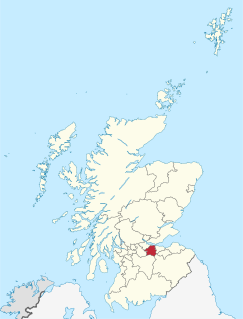
West Lothian is one of the 32 council areas of Scotland, and was one of its historic counties. The county, which was known as Linlithgowshire, was bounded geographically by the Avon to the west and the Almond to the east. The modern council area occupies a larger area than the historic county. It was reshaped following local government reforms in the late 20th century: some areas in the west were transferred to Falkirk; some areas in the east were transferred to Edinburgh; and some areas that had formerly been part of in Midlothian were added.

The shires of Scotland, or counties of Scotland, are historic subdivisions of Scotland established in the Middle Ages and used as administrative divisions until 1975. Originally established for judicial purposes, from the 17th century they started to be used for local administration purposes as well. The areas used for judicial functions (sheriffdoms) came to diverge from the shires, which ceased to be used for local government purposes after 1975 under the Local Government (Scotland) Act 1973.
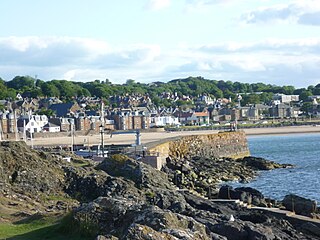
North Berwick is a seaside town and former royal burgh in East Lothian, Scotland. It is situated on the south shore of the Firth of Forth, approximately 20 miles (32 km) east-northeast of Edinburgh. North Berwick became a fashionable holiday resort in the nineteenth century because of its two sandy bays, the East Bay and the West Bay, and continues to attract holidaymakers. Golf courses at the ends of each bay are open to visitors.

The East of Scotland Football League (EoSFL) is a senior football league based in the east and south-east of Scotland. The league sits at levels 6-8 on the Scottish football league system, acting as a feeder to the Lowland Football League.

The Royal Burgh of Haddington is a town in East Lothian, Scotland. It is the main administrative, cultural and geographical centre for East Lothian, which as a result of late-nineteenth century Scottish local government reforms took the form of the county of Haddingtonshire for the period from 1889 to 1921. It lies about 17 miles east of Edinburgh. The name Haddington is Anglo-Saxon, dating from the sixth or seventh century AD when the area was incorporated into the kingdom of Bernicia. The town, like the rest of the Lothian region, was ceded by King Edgar of England and became part of Scotland in the tenth century. Haddington received burghal status, one of the earliest to do so, during the reign of David I (1124–1153), giving it trading rights which encouraged its growth into a market town.

The Archdiocese of Saint Andrews & Edinburgh is an archdiocese of the Latin Church of the Roman Catholic Church in Scotland. It is the Metropolitan see of the Province of Saint Andrews and Edinburgh, consisting of the additional suffragan sees of Aberdeen, Argyll and the Isles, Dunkeld, and Galloway. The archdiocese is led by Archbishop Leo Cushley.

John Hay, 2nd Marquess of Tweeddale was a Scottish nobleman.
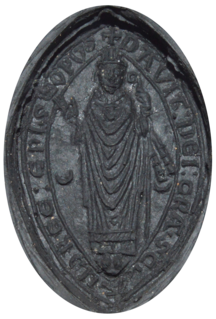
David de Bernham was Chamberlain of King Alexander II of Scotland and subsequently, Bishop of St Andrews. He was elected to the see in June 1239, and finally consecrated, after some difficulties, in January 1240. He died in 1253, and was buried at Nenthorn, near Kelso. One interesting feature of his life which has left a written record is the fact that as bishop of St Andrews he consecrated a long list of churches in his diocese. These churches are listed by name, together with the dates on which they were consecrated, in the 1240s, in a 13th-century Pontifical now in the Bibliothèque National, Paris.
Sir George Lauder of the Bass, Knight, was a cleric, Privy Counsellor, and Member of the Scottish Parliament. He was a legal tutor to Prince Henry.
Whitekirk is a small settlement in East Lothian, Scotland. Together with the nearby settlement of Tyninghame, it gives its name to the parish of Whitekirk and Tyninghame.

The Collegiate Church of St Mary the Virgin is a Church of Scotland parish church in Haddington, East Lothian, Scotland.
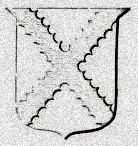
Nicholas de Balmyle, also called Nicholas of St Andrews, was a Scottish administrator and prelate in the late 13th century and early 14th century. A graduate of an unknown university, he served his earliest years as a clergyman at St Andrews, moving on to hold churches in Lothian as well as deputising to two archdeacons of Lothian.
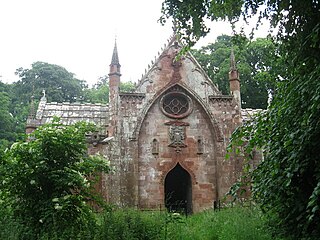
Yester Chapel is situated on the estate of Yester House, at the south-east edge of the village of Gifford in East Lothian, Scotland. The chapel is situated at grid reference NT544671. It is a Category A listed building.

Sir George Washington Browne was a British architect. He was born in Glasgow, and trained there and in London. He practiced mainly in Edinburgh, where he designed a number of large public and commercial buildings, although his work is found throughout Scotland and Britain.
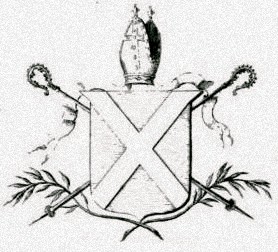
The Diocese or Archdiocese of St Andrews was a territorial episcopal jurisdiction in early modern and medieval Scotland. It was the largest, most populous and wealthiest diocese of the medieval Scottish church, with territory in eastern Scotland stretching from Berwickshire and the Anglo-Scottish border to Aberdeenshire.
Alexander Crichton of Brunstane,, was a Scottish Protestant laird who advocated the murder of Cardinal David Beaton and supported the plan for the marriage of Mary, Queen of Scots and Prince Edward of England. In contemporary letters and documents Alexander is known by variant spellings of "Brunstane," his territorial designation. The original House of Brunstane was near Penicuik, and another Crichton estate at Gilberstoun near Portobello, Edinburgh later became known as Brunstane.
A sheriffdom is a judicial district of Scotland. Originally identical to the Shires of Scotland, from the eighteenth century many counties were grouped to form "sheriffdoms".
The Sheriff of Berwick was historically a royal official, who was responsible for enforcing justice in Berwickshire, Scotland. Prior to 1748 most sheriffdoms were held on a hereditary basis. From that date, following the Jacobite uprising of 1745, the hereditary sheriffs were replaced by salaried sheriff-deputes, qualified advocates who were members of the Scottish Bar.
The 2022–23 East of Scotland Football League will be the 94th season of the East of Scotland Football League, and the 9th season as the sixth tier of the Scottish football pyramid system. The season is expected to begin on 30 July 2022.
References
- ↑ Rankin 1879, p. 63.
- ↑ Rankin 1879, p. 69-73.
- McNeill, Peter G.B. & MacQueen, Hector L. (eds), Atlas of Scottish History to 1707, (Edinburgh, 1996)
- Watt, D.E.R., Fasti Ecclesiae Scoticanae Medii Aevi ad annum 1638, 2nd Draft, (St Andrews, 1969), pp. 309–14
- Rankin, James (1879). A handbook of the Church of Scotland.